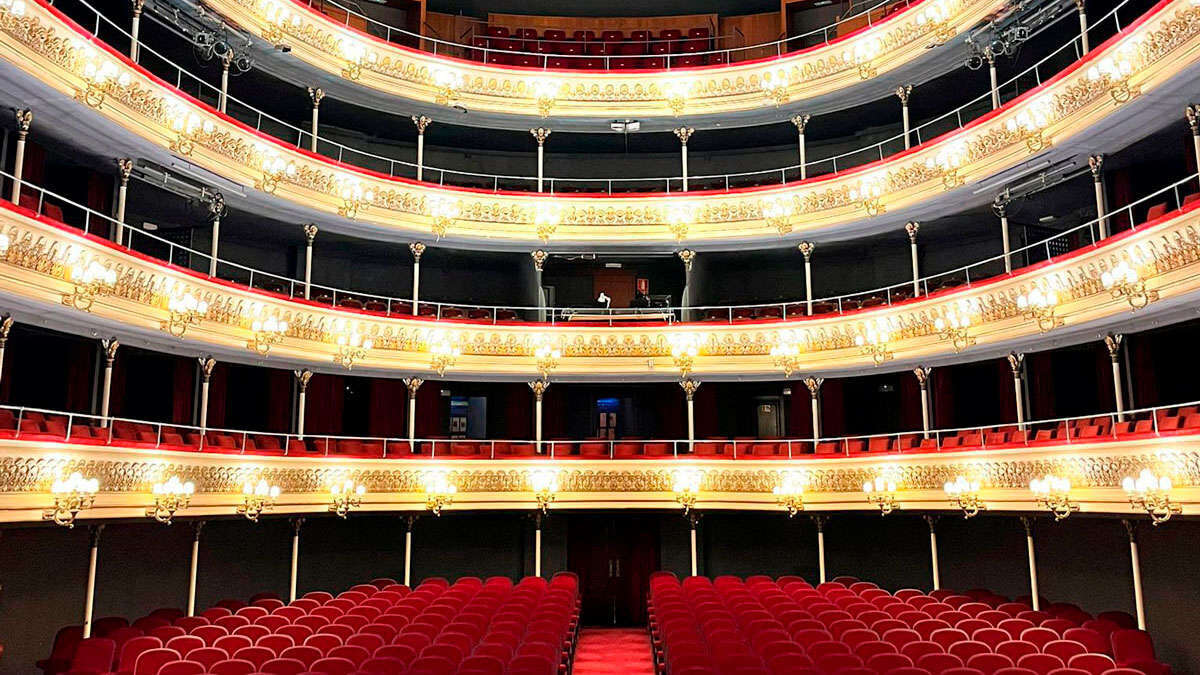
It is one of the oldest active theaters in the world and in its 225 years many things have happened and have forged the history of the Teatro Principal. In the year in which its anniversary is commemorated and the coliseum dresses up with countless events and special programming, this Monday it was the turn of the presentation of a book that traces the history of the building since that distant year 1799. It is a reprint of the one published in 1999 and, once again, it is the work of professor Amparo Martínez Herranz, researcher at the University of Zaragoza. The part that has been incorporated into this book, which can be acquired in the municipal museums, is the history of the coliseum in the 21st century.
“Teatro Principal de Zaragoza. 225 years building a city” aims to be a journey through the history of what is one of the most beloved cultural facilities of the city but also an architectural jewel in itself through six chapters. The reader will travel from that November 12, 1778, when the fire of the Casa de Comedias del Hospital took place, to the inauguration of the Principal in 1799 with the monarchs and the most important people of the time, and so on through a succession of milestones in the history of the theater.
“It is a long genealogy in which, in addition to knowing in an exhaustive and clear way how this place has come to be forged, it is shown that it has been a collective achievement of all citizens because Zaragoza has always been closely linked to the theatrical world and always wanted to maintain this facility”, said Amparo Martínez at the presentation of the book.
The Teatro Principal was built in a provisional way after the fire of the Casa de Comedias but it ended up becoming a stable and beloved theater. So much so that, with Ferdinand VII in the regency, it was said to be “the most beautiful and the most solid of all the theaters in Spain”. And precisely chapter two of the book focuses on this evolution of the coliseum. “The ambition of a great theater” is the name of the third section, which tells its history until 1899.
“The first years of the 20th century were convulsed by the appearance of different social movements.. Zaragoza became the center of the CNT and, therefore, there was no businessman who wanted to take over the Principal. The building was finished 200 years after its creation, which is incredible. In this sense, to enter the Principal is to go through a little piece of Zaragoza’s history,” explained the professor.
The presentation of the book was also attended by the manager of the Patronato de Artes Escénicas, José María Turmo, the Councilor of Culture of the City Council, Sara Fernández, and Enrique Barbero, director of communication and institutional relations of Ibercaja. For all of them, the Teatro Principal is one of the icons of Zaragoza and one of the most important in the city. an “indisputable” task to preserve the architectural and cultural heritage of the city.
Throughout the chapters of the book one can also discover those failed reforms and projects of the coliseum, those very old appearances in the press of the shows that were represented on the tables, the great reform of José Manuel Pérez Latorre and the declaration of the building as an Asset of Cultural Interest. In addition, this Tuesday at 7.30 p.m. there will be a colloquium talk at the Principal with free admission as part of the Circo de Conferencias de las Artes Plásticas in which the author will give some of the keys to this historic place.

